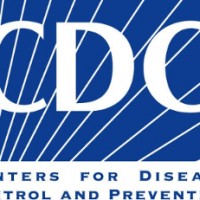CDC reports decrease in breast cancer death rates
- Details
- Published on Thursday, 13 October 2016 20:55
- Written by The Peorian
Breast cancer death rates among women decreased during 2010-2014, but racial differences persisted, according to a study by the Centers for Disease Control and Prevention (CDC) in this week's Morbidity and Mortality Weekly Report.
The findings show changes for death rates from breast cancer by age group for black and white women, the groups with the highest death rates in the United States.
"Our latest data suggest some improvement for black women when it comes to disparities," said Lisa Richardson, MD, Director of CDC's Division of Cancer Prevention and Control. "First, the decline in deaths suggests that white and black women under 50 are benefitting equally from cancer treatments. Second, we're hopeful the lack of difference in death rates between black and white women under 50 will start to be seen in older women."
Data highlights
- There was a faster decrease in breast cancer death rates for white women (‑1.9% per year) than black women (‑1.5 percent per year) between 2010 and 2014.
- Among women under age 50, breast cancer death rates decreased at the same pace for black and white women.
- The largest difference by race was among women ages 60–69 years: breast cancer death rates dropped 2.0 percent per year among white women, compared with 1.0 percent per year among black women.
The authors noted that the drop in death rates among women may be due to improved education about the importance of appropriate breast cancer screening and treatment, as well as women having access to personalized and cutting-edge treatment.
"The good news is that overall rates of breast cancer are decreasing among black women. However, when compared with white women, the likelihood that a black woman will die after a breast cancer diagnosis is still considerably higher," said Jacqueline Miller, M.D., and medical director of CDC's National Breast and Cervical Cancer Early Detection Program.
What can be done to reduce breast cancer risk
Personalized medical treatments combined with community-based cancer control efforts that ensure adequate follow-up and treatment after a cancer diagnosis could help decrease breast cancer death rates faster and reduce differences among black and white women.
Women can take steps to help reduce their breast cancer risk by knowing their family history of cancer, being physically active, eating a healthy diet, maintaining a healthy weight, and getting recommended cancer screenings.
CDC's National Breast and Cervical Cancer Early Detection Program provides access to timely breast and cervical cancer screening and diagnostic services for low-income, uninsured, and underserved women. It is the largest organized cancer screening program in the U.S. and offers free or low cost mammograms to women who qualify.
CDC's Bring Your Brave campaign provides information about breast cancer to women younger than age 45 by sharing real stories about young women whose lives have been affected by breast cancer.
The United States Cancer Statistics web-based report contains the official federal statistics on newly diagnosed cancer cases. CDC and the National Cancer Institute have combined their cancer incidence data sources to produce these statistics. Mortality data are from CDC's National Vital Statistics System. CDC provides support for states and territories to maintain registries that provide high-quality data through the National Program of Cancer Registries.


















































